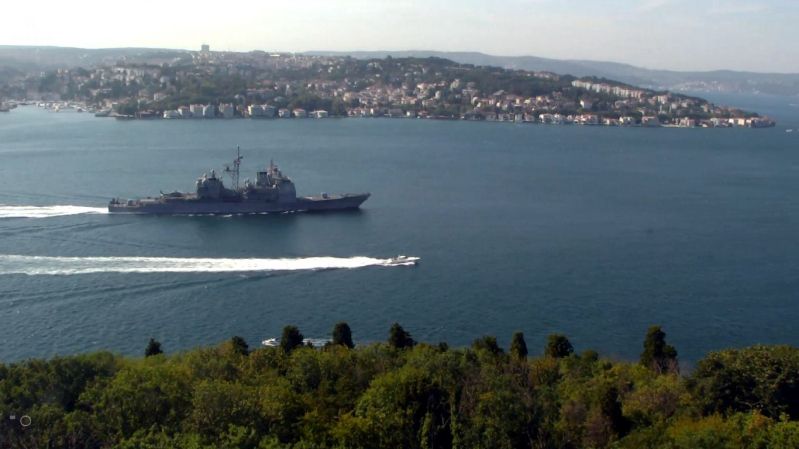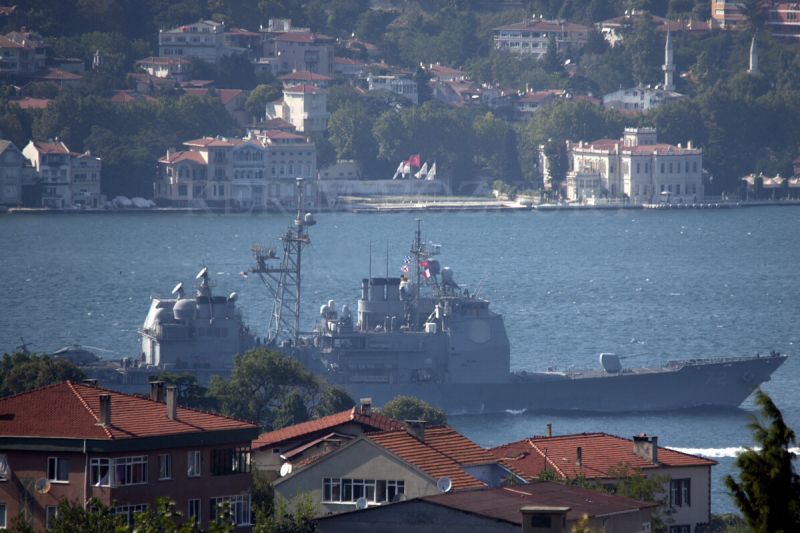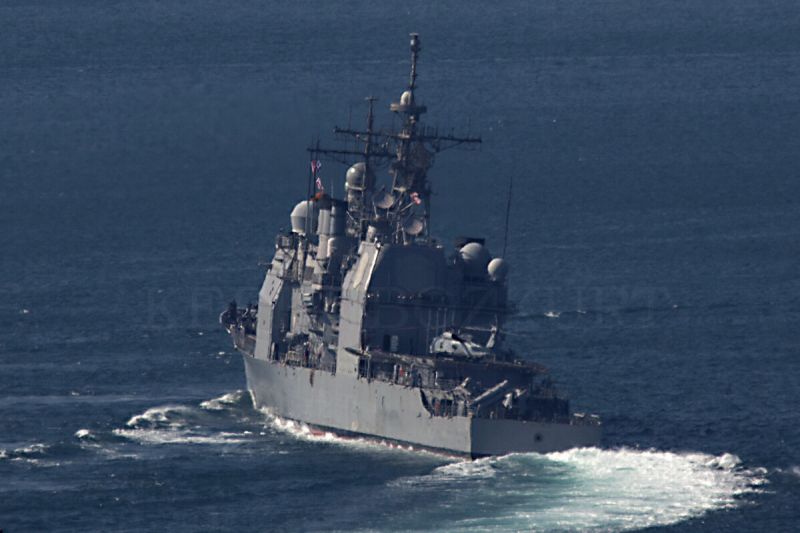Darn...they spotted us. I wonder if this news is true or not.
Yes, they probably found the bait, probably three more on the bottom making recordings, LOL..
Darn...they spotted us. I wonder if this news is true or not.
Who knows what really happened?Darn...they spotted us. I wonder if this news is true or not.
A sad news, well the remaining 64th Aggressors, 527th Space Aggressor Squadron ( no they don't fight in space... not yet anyway) and the 18th Aggressor Squadron operate the F16C meaning that Viper drivers are going to have to deal with viper drivers which is not a asymmetric engagement as intended. This is not the first time the USAF has pulled the teeth form the Aggressors. a option to mix it up might be to have the three services mix it up in red flag with Navy FA18 and Marine F5's. Although I feel the best option would be to mix in a small number of foreign types like was originally done with constant peg and the loaned israelis Kafirs. another might be to hire contractors like Atacs who brings there own jets in.
As fifth-generation fighters outgrow the Air Force’s premiere combat training exercise, the service should look to virtual training for pilots to test the limits of the F-22 and F-35, the outgoing head of Air Combat Command said.
Red Flag exercises, held four times a year at Nellis Air Force Base, Nevada, train more than 27,000 people who fly or support air operations of 1,200 aircraft and 20,000 sorties each year, according to the base. But Gen. Mike Hostage said a shift from live combat training to virtual training would expose pilots to real-life scenarios that can’t be practiced in the Nevada skies.
“The fifth generation brought us capabilities and lethalities that are straining my abilities at Red Flag to produce that same realistic combat environment,” Hostage said last month at an Air Force Association speech in Arlington, Virginia. “I can’t turn on every bell and whistle on my new fifth-generation platforms because, A, they’re too destructive, and B, I don’t want the bad guys to know what I’m able to do.”
Red Flag began in 1975 after it became clear in Vietnam that Air Force pilots were not trained well enough in aerial combat. A pilot was least likely to survive his first 10 missions, but after that the likelihood of survival increased with each mission, Hostage said. Red Flag was created to give a pilot that experience before facing real combat.
However, the newest generation of aircraft, such as F-22s and F-35s, cannot practice all of their capabilities at Red Flag, Hostage said.
Air Force officials who work with the advancement of simulation have seen broad support for an evolution to more virtual training as the service looks to cut costs.
“There are challenges to our standard money process,” said Col. Franz Plescha, the head of the Air Force’s Agency for Modeling and Simulation, in a December interview. “But when it comes down to whether or not it [virtual training]will happen, or guidance that we need from [generals], that part is easy. That support is definitely out there.”
The gaming and virtual reality industries “are rapidly approaching the point where you can’t tell whether you’re in the simulated environment or a real environment.” Plescha said.
However, they aren’t there yet. Virtual reality still cannot replicate the “kinesthetic environment” or the sensory inputs that are felt in real combat. Until simulators can realistically emulate combat flight, the service should hold on to its large-scale training exercises, Hostage said.
“The last thing you want to do is put someone in a [virtual] world and they get negative training,” said Maj. Gen. Jack Shanahan, commander of the Air Force Intelligence, Surveillance and Reconnaissance Agency, said at the C4ISR & Networks annual conference in May. “It has to be realistic training, and having seen some [virtual] flag exercises in the past, we’ve come a long way, and to me that’s where we need to put some of our future investments.”
There will be other challenges, Hostage said, such as protecting networks from outside hackers.
Another limitation of Red Flag is that it is just training. Pilots can’t fire live missiles, and no one blows up in the skies over Nevada.
“That fundamentally changes the dynamics of the fight,” Hostage said. “You go into real life when people really blow up, it looks different and you react differently. You can’t really get that in the Nellis fight but you can see that in the virtual constructive arena.”
Red Flag wouldn’t go away if virtual reality training becomes a reality, but its focus would change.
“I will still do Red Flags, I will still do live training in live platforms,” Hostage said. “But the place where I will be able to take the gloves off, the place where I can turn on all the bells and whistles and get full capability is going to be in the virtual constructive arena.”
Naval Today said:Huntington Ingalls Industries’ Ingalls Shipbuilding division has delivered the composite deckhouse for the destroyer Michael Monsoor (DDG 1001) to the U.S. Navy.
The 900-ton deckhouse provides an advanced structure that will house the ship’s bridge, radars, antennae and intake/exhaust systems and is designed to provide a significantly smaller radar cross-section than any other ship in today’s fleet.
“This is a very unique structure for a very unique ship,” said Kevin Amis, program director, DDG 1000 Program. “Wherever she goes in the future, the shipbuilders of the Gulfport Composite Center of Excellence will know that they had a hand in building one of the most complex carbon fiber structures ever built.”
Ingalls built and delivered the composite deckhouse and hangar for DDGs 1000 and 1001 at the company’s Composite Center of Excellence in Gulfport. Made almost exclusively using cored composite construction processes, the deckhouse and hangar take full advantage of the properties of the carbon fiber materials and balsa wood cores. The composite deckhouse provides the unique performance and technical capability necessary in the Zumwalt class of destroyers. The structure is as strong as steel, at significantly less weight. The composite deckhouse also reduces maintenance cost over the life span of the ship due to its corrosion resistance in the marine environment.
The deckhouse will be placed on a barge and shipped to General Dynamics Bath Iron Works in Maine to be integrated onto the steel hull of DDG 1001.




Army selects Bell, Sikorsky-Boeing for JMR-TD
By: STEPHEN TRIMBLESÃO PAULO Source: Flightglobal.com in 4 hours
Bell Helicopter and a Sikorsky/Boeing team will each build flying prototypes for a US Army programme that aims to demonstrate a new generation of high-speed rotorcraft.
The army selected Bell’s V-280 Valor optimum speed tiltrotor (pictured below) and the Sikorsky-Boeing concept for a compound coaxial rotor called the SB-1. Both aircraft are planned to fly for three years starting in fiscal 2017.
asset image
The selection means that start-up companies AVX Corp and Karem Aircraft will have to find ways to finance continued development. Other companies, such as Airbus Helicopters, declined to participate in the joint multirole – technology demonstrator (JMR-TD) programme.
The army still plans to hold an open competition in the next decade for the future vertical lift (FVL) programme, which aims to replace all of the army’s helicopters with high-speed rotorcraft.
The JMR-TD winners, however, will receive tens of millions of dollars each from the army to develop and demonstrate their prototype aircraft. The selected companies also have pledged to at least match the government’s investment with internal funding.
For Bell, the V-280 also represents an opportunity to build on the V-22 Osprey programme with what it calls the third-generation of tiltrotor technology, including the original XV-15 prototype first flown in the 1980s.
“We remain focused on providing exceptional capabilities and flexibility in an advanced aircraft with reduced weight, complexity and cost,” Bell says in a statement.
Sikorsky and Boeing, meanwhile, are leveraging the former’s investment in compound, coaxial rotor technology with the SB-1 (pictured below). Sikorsky has already tested and retired the X2 proof-of-concept vehicle, as well as launched the S-97 Raider programme. The SB-1 will further scale up the technology, using Honeywell T55 turbofan engines to power the aircraft for the demonstration.
asset image
JMR-TD phase 1 is a three-year programme focused on demonstrating the feasibility of high-speed rotorcraft technologies. A second phase is scheduled to begin in Fiscal 2020 demonstrate mission software in a laboratory environment.
The FVL programme is not expected to field a new aircraft until after 2030. At the same time, the army faces fiscal pressures to modernise and sustain the current fleet. It is retiring hundreds of Bell OH-58D Kiowa Warrior helicopters next year, off-loading the armed scout mission onto the Boeing AH-64E Apaches teamed with unmanned aircraft.
Bell, Sikorsky/Boeing To Build Army JMR Rotorcraft Demonstrators
Aug 12, 2014Amy Butler and Graham Warwick | AWIN First
Bell Helicopter and Sikorsky/Boeing have been selected to build high-speed rotorcraft technology demonstrators for the U.S. Army. Both aircraft are scheduled to fly in 2017.
Bell will build the 280-kt. V-280 Valor tiltrotor and Sikorsky/Boeing the 230 kt.-plus SB.1 Defiant rigid coaxial-rotor compound helicopter under the $217 million first phase of the Joint Multi Role technology demonstration (JMR TD).
JMR TD is the precursor to the Army’s planned Future Vertical Lift Medium (FVL-M) program to replace the Sikorsky UH-60 Black Hawk utility helicopter from the mid-2030s onward. Later an attack derivative could replace the Boeing AH-64 Apache and a marinized version of the Navy’s MH-60 Seahawk.
The two other competitors for JMR TD Phase 1, small companies AVX Aircraft and Karem Aircraft, are expected to receive Army contracts for some level of continued technology development. AVX was proposing a 230-kt. coaxial-rotor compound and Karem a variable-speed tiltrotor.
Cost-sharing is a major component of JMR and executives at both Bell and Boeing have said industry is investing many times more than the government in the technology demonstration because of the importance of the follow-on FVL-M program.
How much of the JMR TD budget the Army has left to spend with AVX and Karem will depend on the cost-sharing agreed to by Sikorsky/Boeing and Bell.
"We are currently still in negotiations with the U.S. Army and hope to continue some level of work, but do not know what that will be or how much funding will be involved," says AVX. "We are in discussions with the Army," Karem says.
The Defiant and Valor will demonstrate high-speed rotorcraft candidates for FVL-M, at or close to full scale, but there is no guarantee that the Army will ultimately opt for higher speed when it comes to replace the UH-60.
With rigid coaxial rotors, pusher propeller and advanced fly-by-wire controls, "Defiant will use Sikorsky’s proven X2 technology to overcome aircraft design challenges," says Mick Maurer, Sikorsky’s president. The demonstrator will be powered by a pair of Honeywell T55 turboshafts.
Bell’s demonstrator will be powered by a pair of General Electric T67 turboshafts, mounted fixed at the wingtips and driving tilting proprotors. The V-280 offers the capability "to fly twice the range at double the speed of any existing helicopter," says Program Director Keith Flail.
Bell’s focus is on reducing the weight, complexity and cost of the "third-generation" tiltrotor, compared to those of the Bell Boeing V-22 Osprey. Bell’s team members include Lockheed Martin for the mission system, Spirit AeroSystems the composite fuselage, GKN V-tail and Moog fly-by-wire flight controls.
...
What USN has to do is get serious bring in 4 x Arleigh Burke DDG backed by 1-2 Tico CG have a proper surface action group deployed to the Black Sea on a permanent basis rotate them in and out
...
